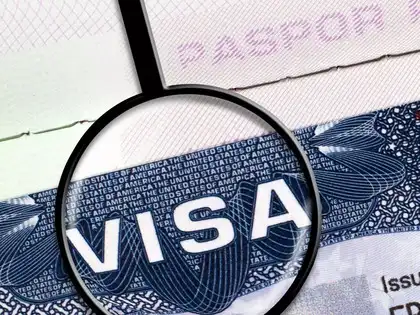U.S. Student Visa Restrictions Highlight Right Wing Policy Shift and Its Global Impacts
Why in News?
Fresh changes in the U.S. student visa process, including extended vetting procedures and policy shifts under the Trump administration, are creating significant barriers for Indian students. The increasing restrictions not only affect student mobility but also reflect the growing influence of right-wing politics in U.S. immigration policy. 
Introduction
The United States, once a prime destination for Indian students and skilled workers, is witnessing a tightening of student visa processes. These measures include increased scrutiny of applicants, delays in interview appointments, and changes to post-study work opportunities. The shift is not merely administrative—it is deeply political, reflecting broader ideological changes in the U.S. under the Trump administration.
Key Issues and Institutional Concerns
1. Extended Vetting and Delays
-
U.S. consulates have resumed student visa interviews, but with new “extended vetting” protocols.
-
These include rigorous background checks, including social media activity.
-
The process caused a near one-month freeze in visa appointments, delaying travel plans for students heading to U.S. universities in August or September.
2. Threat to OPT and Post-Graduate Opportunities
-
The Trump administration’s nominee to head U.S. Citizenship and Immigration Services has pledged to end the Optional Practical Training (OPT) program.
-
OPT allows international students to work in the U.S. after graduation while on a student visa.
-
Ending OPT would remove a critical pathway for jobs, work visas, and green cards—making the U.S. less attractive for international talent.
3. Fixed-Tenure Visas and Declining Admissions
-
Plans to issue only fixed-tenure student visas limit flexibility.
-
Funding cuts to research and higher education have led universities to rescind PhD admissions, especially for Indian students.
-
Several U.S. cities have reported a drop in visa approvals and increased scrutiny on institutions granting admissions.
4. Political Backdrop and Right-Wing Dominance
-
The Trump administration’s hardline immigration stance is supported by extreme-right figures like Stephen Miller.
-
The passing of the “Big Beautiful Bill” and budget cuts to green energy highlight ideological priorities over global inclusivity.
-
The departure of tech figures like Elon Musk signals a deeper shift—where even business-friendly policies are overridden by nationalist agendas.
5. Implications for Indian Students and Future Mobility
-
Many Indian students have applied early this year, anticipating tougher conditions before the 2024 U.S. presidential election.
-
The situation suggests India may need to reduce its reliance on the U.S. for education and explore other global partnerships.
Challenges and the Way Forward
-
Challenge: Reduced access to quality education and post-study work in the U.S.
-
Impact: Potential brain drain redirection to countries like Canada, UK, or Australia.
-
Way Forward: India must boost its domestic research ecosystem and form strategic academic partnerships globally.
Conclusion
The shift in U.S. visa policy signals more than just administrative reform—it reflects the ideological dominance of right-wing extremism in U.S. governance. For India, it presents both a challenge and an opportunity: to rethink its educational diplomacy and reduce dependency on the American academic-industrial complex. As the 2024 U.S. elections approach, global observers will closely watch whether these trends intensify or recede.
Q&A Section
1. What is the extended vetting process introduced by the U.S.?
It involves rigorous background checks, including an applicant’s social media activity, and has caused delays in student visa processing.
2. What is the future of the OPT program under current U.S. immigration policy?
The Trump administration plans to end the OPT program, which could discourage international students from studying in the U.S.
3. How has Indian student mobility been affected?
There has been a decline in visa approvals, rescinded PhD admissions, and growing uncertainty due to stricter policies.
4. What does the “Big Beautiful Bill” signify?
It represents the dominance of right-wing ideologies, including cuts to green energy and a rejection of globalism in favor of nationalism.
5. What should India do in response to these developments?
India needs to strengthen its domestic higher education infrastructure and diversify its international academic partnerships.








